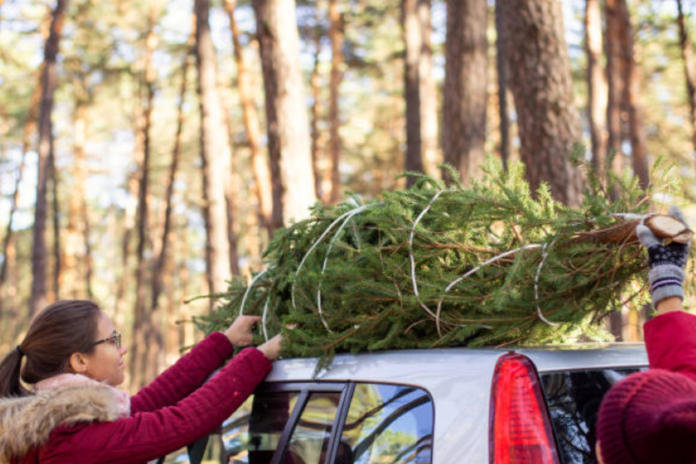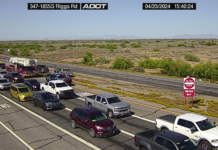
The pine scent of a fresh-cut Christmas tree is as much a part of the holiday season as eggnog and presents. Getting that tree home, however, brings potential safety risks.
Arizona Department of Transportation offers Maricopans tips to get that tree home safely.
Securing your tree using nets, tarps, or tie-downs is a vital step in keeping roads safe, especially if returning from the high country and cutting your tree. A tree in the roadway is a safety hazard and unsecured loads can mean citations and fines of $500 or more, which could put a serious dent in your gift-giving budget.
With so many residents and visitors on roadways this time of year, it is more important than ever to ensure everyone’s safety while transporting Christmas trees.
When the season is over, Maricopans are encouraged to recycle trees. Visit city websites for locations for proper disposal. It is important to secure the tree when transporting to those locations, as well.
Burning your tree for disposal is discouraged. That adds to air pollution.
Tips for securing a Christmas tree atop a vehicle:
- Tie it down: Your tree must be strapped down. This is easier when the branches are first tied down around the tree. Once the tree is held tightly together, drivers should securely strap the tree directly to their vehicles with rope, bungee cords or netting. The tree, just like any large load, should be able to withstand winds up to 70 miles per hour if on a freeway. Often, twine available at Christmas-tree lots is not strong enough.
- Cover it up: Cover the tree with a sturdy tarp, canvas or netting to ensure smaller clippings and branches do not fly off. It is important to remember to secure the tarp to the vehicle, as well, so it does not become debris.
- Point it in the right direction: Position the tree so the stump end faces the front. Trees that extend past the vehicle’s bumper should have a reflective flag tied to the end.
- Double check: Loads can shift, and tie-downs may become loose during transit. Remember to check the load frequently to make sure the top, back and sides are all secured throughout the trip. The load should be able to withstand not only strong winds but also sudden braking and bumps on the road.
Additional information: https://donttrashaz.org/.

![MHS G.O.A.T. a ‘rookie sleeper’ in NFL draft Arizona Wildcats wide receiver Jacob Cowing speaks to the press after a practice Aug. 11, 2023. [Bryan Mordt]](https://www.inmaricopa.com/wp-content/uploads/2024/04/cowing-overlay-3-218x150.png)




![Maricopa’s ‘TikTok Rizz Party,’ explained One of several flyers for a "TikTok rizz party" is taped to a door in the Maricopa Business Center along Honeycutt Road on April 23, 2024. [Monica D. Spencer]](https://www.inmaricopa.com/wp-content/uploads/2024/04/spencer-042324-tiktok-rizz-party-flyer-web-218x150.jpg)





![Alleged car thief released without charges Phoenix police stop a stolen vehicle on April 20, 2024. [Facebook]](https://www.inmaricopa.com/wp-content/uploads/2024/04/IMG_5040-218x150.jpg)

![MHS G.O.A.T. a ‘rookie sleeper’ in NFL draft Arizona Wildcats wide receiver Jacob Cowing speaks to the press after a practice Aug. 11, 2023. [Bryan Mordt]](https://www.inmaricopa.com/wp-content/uploads/2024/04/cowing-overlay-3-100x70.png)


